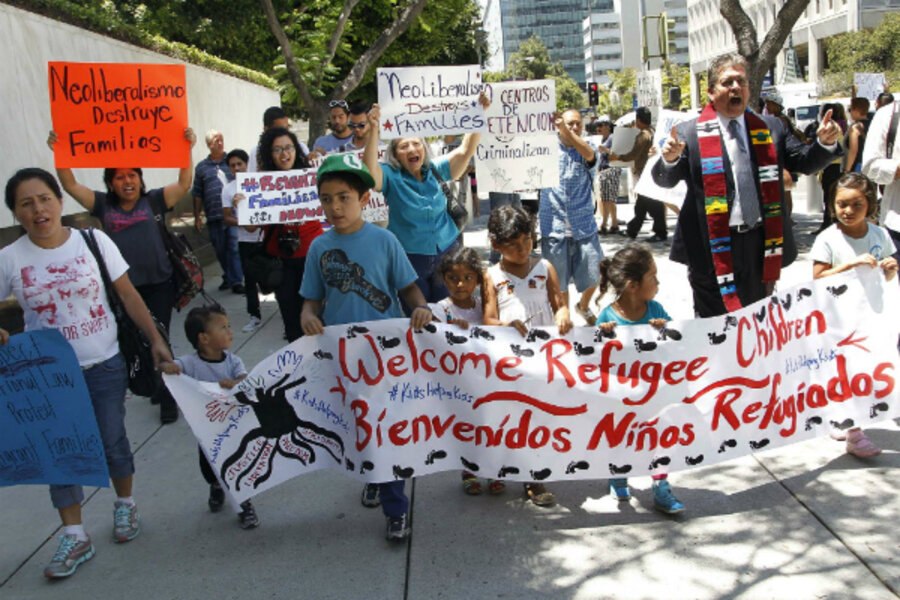Border crisis 101: What’s in Obama’s $3.7 billion proposal?
Loading...
| WASHINGTON
The Obama administration requested $3.7 billion in emergency funds Tuesday from Congress to address the surge of unaccompanied children crossing into the United States from the south.
The request for funds – nearly twice as much as originally expected – would go toward enhanced border security, care facilities for the children, additional immigration judges and agents, and efforts to help Central American nations curtail the exodus of children northward.
The goal is to speed up the processing of the flood of immigrants, with an eye toward sending as many as possible back to their countries of origin and improving the detention conditions while they’re in the US, White House officials told reporters. The administration also aims to deter smugglers from bringing more children to the US.
“We are taking an aggressive approach on both sides of the border,” a White House official said.
Speeding deportations is a key piece of the stepped-up effort, White House officials said, both to address the status of children already here but also to discourage more from coming.
In a letter to Congress, President Obama also asked for legal authority to accomplish two goals: give the secretary of Homeland Security additional discretion in processing the return and removal of unaccompanied children from “noncontiguous countries” like Guatemala, Honduras, and El Salvador; and increase penalties for smugglers of “vulnerable migrants,” such as children.
House Speaker John Boehner’s spokesman said members of Congress would review the White House proposal, but one element was already lacking, he said.
“The speaker still supports deploying the National Guard to provide humanitarian support in the affected areas – which this proposal does not address,” said spokesman Michael Steel in a statement.
Some 52,000 unaccompanied minors have crossed into the US via the southern border since October. President Obama and Texas Gov. Rick Perry (R) are to meet in Dallas on Wednesday to discuss the crisis.
The $3.7 billion request for new FY 2014 funds from Congress covers three broad components:
Deterrence and enforcement. The request includes $1.6 billion for the departments of Homeland Security and Justice to support an “aggressive deterrence and enforcement strategy.” Immigration and Customs Enforcement, or ICE, would get $1.1 billion. Most of it would pay for detention and removal of undocumented adults traveling with children, expansion of alternatives to detention programs, and “additional prosecution capacity” for adults with children who cross into the US illegally.
An additional $433 million would go to Customs and Border Protection, including money to pay overtime and temporary duty costs of border patrol agents and facilities for children in the border patrol’s custody.
The Department of Justice would get $64 million, mostly to fund the hiring of 40 additional immigration judge teams and the expansion of courtroom capacity.
Foreign cooperation. The State Department would get $300 million. Most of it would support efforts to repatriate migrants to Central America and to help those countries better control their borders. Another goal is to help those countries address the root causes driving the out-migration.
Beyond the initial assistance, the White House said, continued funding for this purpose would be contingent on “sustained progress and cooperation by the Central American countries.”
Other money would support State Department media campaigns in Mexico, Guatemala, El Salvador, and Honduras targeting “potential migrants and their families.”
Capacity. The Department of Health and Human Services (HHS) would get $1.8 billion to care for unaccompanied children.
“Without supplemental funding, absent undertaking extraordinary measures, agencies will not have sufficient resources to adequately address this situation,” the White House said.
If the funding request is not granted, the White House said, HHS will not have adequate shelter capacity for unaccompanied children, border patrol agents will be reassigned to child-care duties and away from their work protecting the border, and the Justice Department will be unable to keep up with its growing caseload.






